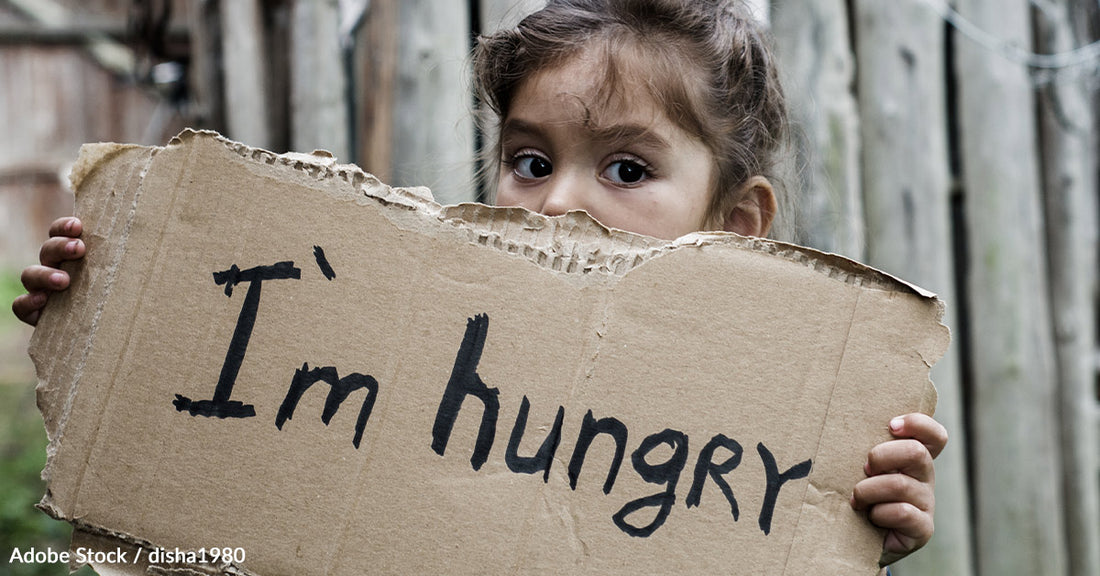Millions Are Hungry, Here Are 9 Steps You Can Take To Help Feed Our Neighbors
Matthew Russell
Food insecurity is a persistent and pervasive problem, and food banks are often on the front lines of the fight to provide relief to those struggling to find their next meal.
Economic fallout from the pandemic is still rippling through our country, according to the Center on Budget and Policy Priorities, and many people find themselves wondering for the first time where their next meal will come from.
 Photo: Adobe Stock / TommyStockProject
Photo: Adobe Stock / TommyStockProjectWith the economic impacts of the COVID-19 pandemic still being felt, many people are struggling to make ends meet.
Many of us are able to gather with loved ones and enjoy the comfort and joy that this time of year brings. But for millions of people around the world, the reality is very different.
These are our friends and our neighbors. They need our help.
As McKinsey & Company reports, food banks are facing a number of challenges as they work to serve vulnerable populations. One major challenge is a decline in donations.
 Photo: Adobe Stock / kuarmungadd
Photo: Adobe Stock / kuarmungaddFood banks are facing a number of challenges as they work to serve vulnerable populations.
With the economic impacts of the COVID-19 pandemic still being felt, many people are struggling to make ends meet and may not have extra resources to give, NPR reports. This can make it difficult for food banks to keep their shelves stocked and meet the growing demand for assistance.
So what can we do to help provide food relief to those in need during this holiday season and beyond? Here are 10 ways anyone can make a difference:
 Photo: Adobe Stock / New Africa
Photo: Adobe Stock / New AfricaMany people find themselves wondering for the first time where their next meal will come from.
9. Donate food
Non-perishable items such as canned goods, grains, and pasta can be donated to food banks or local pantries.
8. Volunteer
Many food banks rely on volunteers to help sort and distribute donations, as well as assist with other tasks.
 Photo: Adobe Stock / Monkey Business
Photo: Adobe Stock / Monkey BusinessMany food banks rely on volunteers to help sort and distribute donations, as well as assist with other tasks.
7. Host a food drive
Organize a food drive in your community to collect donations for a local food bank.
6. Shop at a food bank thrift store
Many food banks operate thrift stores to generate additional funds for their programs, Feeding America reports. By shopping at these stores, you can support their efforts while also finding great deals.
 Photo: Adobe Stock / habrovich
Photo: Adobe Stock / habrovichMany food banks operate thrift stores to generate additional funds for their programs.
5. Educate yourself and others
Learn more about food insecurity and the challenges faced by food banks, and share this information with others to raise awareness and encourage action.
4. Advocate for policies that address food insecurity
Contact your elected representatives and ask them to support policies that address hunger and food insecurity.
 Photo: Adobe Stock / disha1980
Photo: Adobe Stock / disha1980Food banks face challenges keeping their shelves stocked as the demand for assistance grows.
3. Support local agriculture
Buy products from local farms and farmers markets to support the local economy and ensure that fresh, nutritious food is available to all members of the community.
2. Spread the word
Share information about food insecurity and the work of food banks with your network and encourage others to get involved.
 Photo: Adobe Stock / Halfpoint
Photo: Adobe Stock / HalfpointGreater Good Charities programs allow food banks to purchase the items they need most and ensure that they are able to meet the specific needs of their community.
1. Donate money
Monetary donations to Greater Good Charities programs allow food banks to purchase the items they need most and ensure that they are able to meet the specific needs of their community.
Greater Good Charities is currently partnering with The Hunger Site, 12 Tomatoes, and Chris Pratt—and we need YOUR help. Your donations will help in two ways: 50% will support Feeding America® and its programs to address the meal shortage. 50% will be given as cash grants to front-line hunger relief organizations in areas hardest hit by the economic impacts of COVID-19, ensuring they're able to sustain their operations to help those in greatest need.
By taking action, we can all play a role in supporting those in need and working towards a future where everyone has access to the nutritious, healthy food they need to thrive.
Sign the Pledge to Feed Our Neighbors In Need!

 Photo:
Photo: 